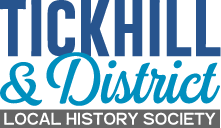

The Scarbrough Arms
The Scarbrough Arms takes its name from the Earl of Scarbrough, the local landowner, whose seat is at nearby Sandbeck Park. Although the title was created in 1692 for Richard Lumley, 2nd Viscount Lumley, the inn was not known by this name until sometime between 1822 and 1837.
It was originally called the Black Swan, and one of the earliest references can be found in the Tickhill Enclosure Minute Book: on June 13, 1765, Commissioners appointed to implement the Enclosure Act, ‘met for the first time at the public house of Anne Barker, the Black Swan’; this was to be the first of several meetings there. Further references to the name appear in the Doncaster Gazette, these relate to sales of land and property taking place at the Black Swan later in the century. The innkeeper in the early years of the 19th century was Thomas Sissons, who is described in Baines’ 1822 Directory as a ‘victualler & tailor’. What instigated the change of name to the Scarbrough Arms in the early 1830s is not known.
In the mid 19th century, both the census and local trade directories describe the licensee, John Sharp, as ‘innkeeper and farmer’ – the 1848 Tickhill Tithe Award records the Earl of Scarbrough as the landowner: Sharp, therefore, appears to have been a tenant farmer. Around this time, the bi-annual Rent Day Dinners were held in the Scarbrough Arms; these were ‘social’ occasions where landlords and their agents would meet their tenant farmers to discuss problems, but also more importantly to collect their rent.
Situated on Sunderland Street, which was once part of the Bawtry to Tinsley Turnpike Road, the inn’s business would have flourished in the late 18th and early 19th centuries, when coach travel was at its peak. In 1862, however, a survey of Lord Scarbrough’s estates referred to the Scarbrough Arms and farm as in a state of ‘dreadful repair’; this was largely due to a decrease in regular use by coach travellers and cattle drovers, as the railways gained in popularity. The 20th century saw a revival in trade, with the arrival of motorised transport in the form of the charabanc, bus and motor car.
20th century landlords have included Robert Barham, Messrs. R W Brown, and R Watkinson, Mrs Fred Saxton, Mrs George Handy and George William Handy.